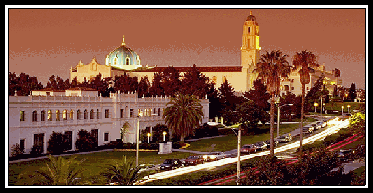
MANAGERIAL DECISION MAKING
 |
| Fall 2003 |
 |
Graduate Business Administration 509 MANAGERIAL DECISION MAKING |
|
|
|
| | HOME | SYLLABUS | CALENDAR | ASSIGNMENTS | ABOUT PROF. GIN | |
|
Answers to Recommended Problems Chapter 11 6. The Nash equilibria for each firm are indicated by the corresponding colors.
a. Firm A will engage in high R & D, Firm B will engage in medium R & D for profits of 10 and 8 respectively b. If they could communicate, a better result would be for Firm A to engage in medium R & D and Firm B to engage in low R & D, for profits of 12 and 9 respectively. 8. The Nash equilibria for each firm are indicated by the corresponding colors.
a. There are no dominant or dominated strategies for either player. b. The equilibrium strategies are R1 and C3, with a payoff of 10. 14. The Nash equilibria for each firm are indicated by the corresponding colors.
a. Delta and U.S. Air will each charge $99, for profits of 18 and 16 respectively. (Note: A fare of $139 is a dominated strategy for each company, and can be eliminated. Once that is done, $99 is the dominant strategy for each firm for what remains.) b. With repeated play, the airlines have an incentive to cooperate to charge $139 each, which will lead to the maximum combined profit for the two companies. As the 18-month mark approaches, the cooperation will likely break down. 4.
The most profitable decision is to redesign the aircraft. 8. In this case, Firm A wants the smallest result possible.
The appropriate decision is to attempt to settle the case. |
||||||||||||||||||||||||||||||||||||||||||||||||||||||||||||||||||||||||||||||||||||||||||||||||||||||||||||||||||||||||||||||||||||||||||||||||||||||||||||||||||||||||||||||||||||||||||||||||||||